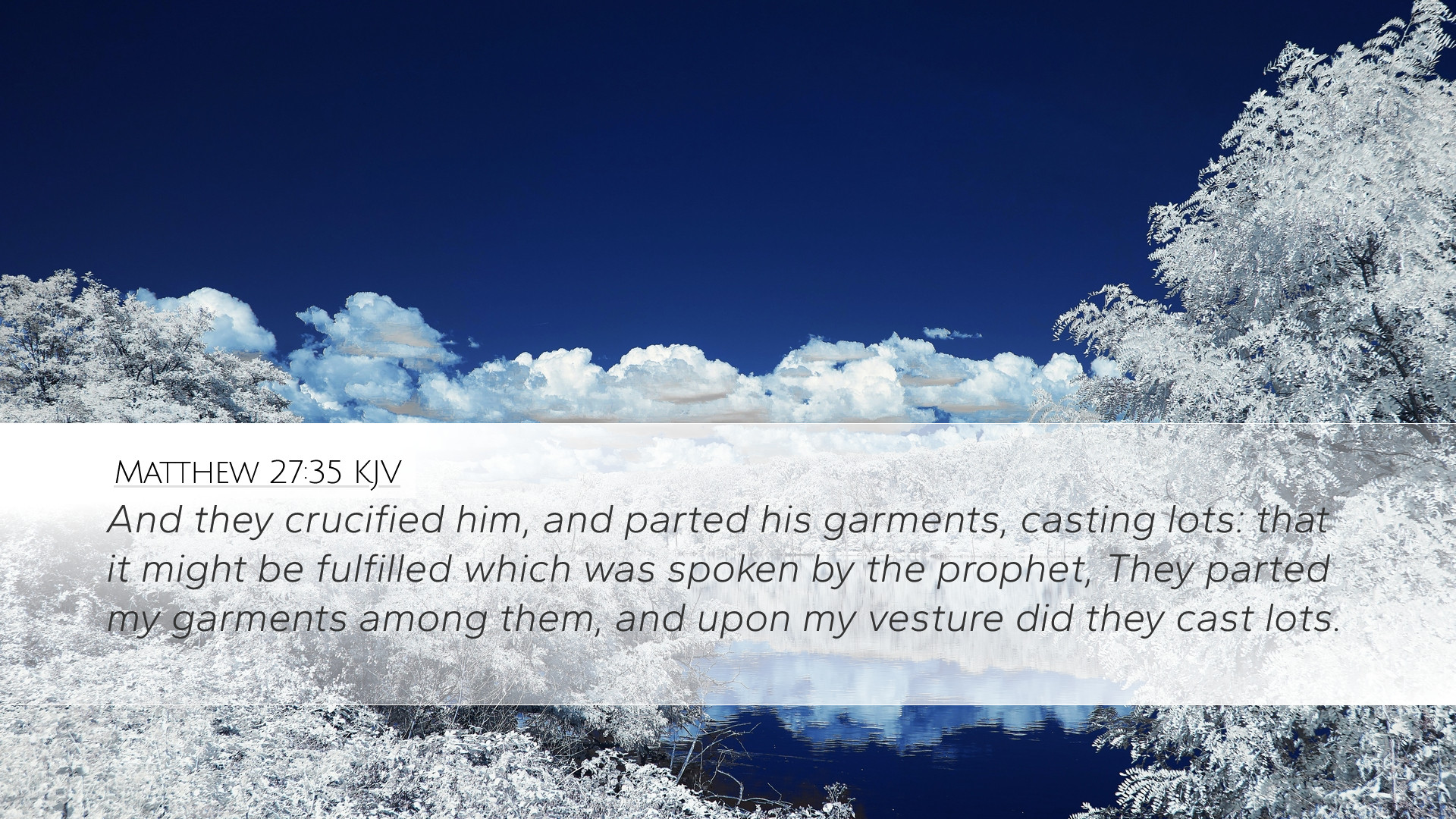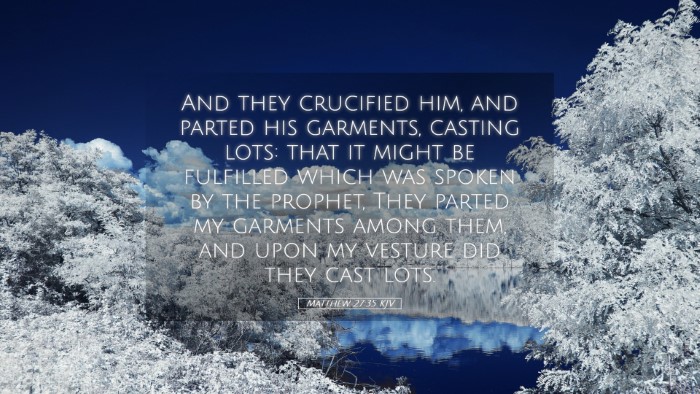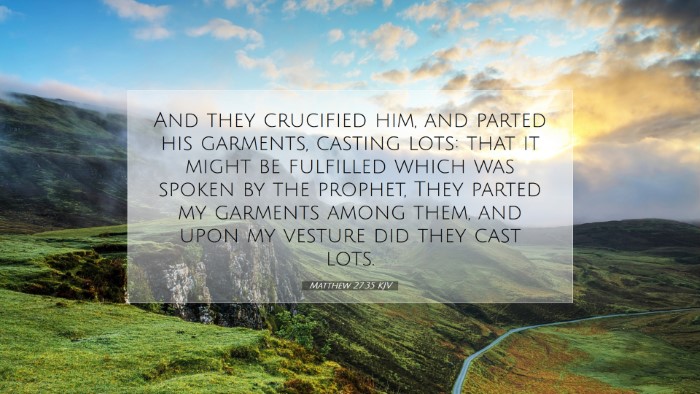Commentary on Matthew 27:35
Matthew 27:35 states: “And they crucified him, and parted his garments, casting lots: that it might be fulfilled which was spoken by the prophet, They parted my garments among them, and upon my vesture did they cast lots.”
Introduction
This verse captures a pivotal moment in the crucifixion of Jesus Christ, rich in theological significance and prophetic fulfillment. The act of crucifying Jesus and the subsequent division of His garments not only illustrates the depths of human cruelty but also highlights the divine orchestration of events, fulfilling Old Testament prophecies.
Historical and Cultural Context
Understanding the cultural practices surrounding crucifixion and the significance of clothing in the biblical context is essential for a comprehensive interpretation of this verse. In Roman times, crucifixion was a brutal and public form of execution, reserved for the most severe criminals. It was meant to serve as a deterrent to others. The act of dividing garments and casting lots over them further emphasizes the shame and humiliation Jesus faced during His crucifixion.
Interpretations from Public Domain Commentaries
-
Matthew Henry:
Matthew Henry reflects on the stark reality of Jesus' crucifixion, noting the fulfillment of prophecy as a testament to God's sovereignty. He emphasizes that the act of parting Christ's garments is not merely a detail but a significant indicator of the suffering Servant depicted in the Scriptures. Henry connects this event to Psalm 22:18, drawing parallels between David's lament and the suffering of Christ. He underscores the idea that this fulfillment serves as a reminder of God’s promises and the unwavering purpose behind Christ's mission.
-
Albert Barnes:
Albert Barnes elaborates on the phrase “they parted his garments,” explaining that it signifies the extent of Jesus’ humiliation. He notes that Roman soldiers, indifferent to the significance of the one they were crucifying, displayed a lack of moral consideration by gambling for His clothes. Barnes also emphasizes the prophetic nature of this event, interpreting it as an essential aspect of the atoning work of Christ. This act of gambling for His garments symbolizes the fulfillment of divine prophecy and serves to confirm Christ's identity as the Messiah.
-
Adam Clarke:
Adam Clarke provides an insightful examination of the Scriptural background surrounding this moment. He indicates that the act of casting lots was commonly used to divide spoils among soldiers and reflects the dehumanization of Jesus. Clarke poignantly points out that Jesus, stripped of His garments, portrays the ultimate nakedness not only in a physical sense but also in a spiritual one—exposed to mockery and scorn. He reiterates the prophetic significance, linking it to the prophecy of Zechariah and expounding upon the implications for both Jews and Gentiles in the context of salvation history.
Theological Implications
The crucifixion of Jesus and the actions described in Matthew 27:35 evoke profound theological reflections. Firstly, this passage emphasizes the concept of substitutionary atonement. Jesus willingly endured humiliation and suffering, fulfilling the Scriptures and taking on the sins of humanity. The act of parting His garments serves as a microcosm of the greater reality that Jesus would be stripped of dignity and subjected to death for the sake of the world.
Secondly, this verse highlights the theme of prophetic fulfillment. The reference in Matthew to the prophetic words, “They parted my garments among them,” positions Jesus within the grand narrative of redemption foretold in the Scriptures. This connection reinforces the faithfulness of God to His promises and the continuity of His plan throughout redemptive history.
Application for Today’s Believers
For modern-day believers, Matthew 27:35 serves as a reminder of the height and depth of Christ’s love and willingness to suffer for humanity's sake. It challenges Christians to reflect on their own lives in light of Christ's sacrifice—to consider the cost of discipleship and how they can embody the servanthood demonstrated by Jesus.
Furthermore, this passage calls upon the Church to remember the prophetic nature of God’s Word. As believers engage with Scripture, they should seek to understand the ways in which the Old Testament prepares and points to Christ, enriching their faith and deepening their reliance on God's sovereign plan.
Conclusion
Matthew 27:35 encapsulates the sorrowful yet redemptive story of Jesus' crucifixion. Through the insights garnered from public domain commentators, it becomes evident that this moment is not just a narrative detail but a profound part of God’s salvific plan. As pastors, students, theologians, and scholars delve into this verse, they are encouraged to embrace its multifaceted implications and carry forward the message of hope and love that it embodies.


